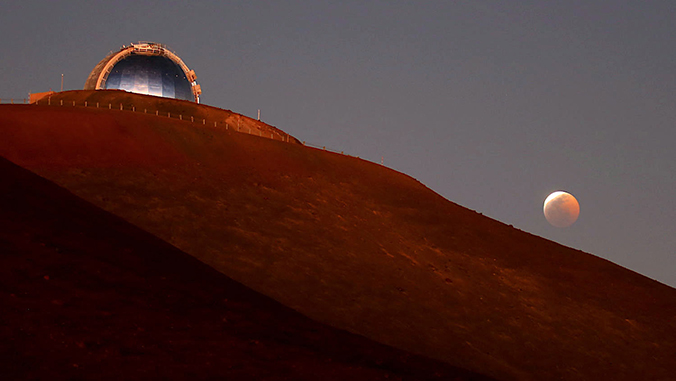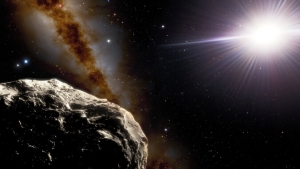
The University of Hawaiʻi Institute for Astronomy (IfA) has been selected by NASA to continue to operate the agency’s Infrared Telescope Facility (IRTF) on Maunakea, a primary asset in NASA’s planetary defense system. NASA made the announcement in a June 30 news release.

Among its many science programs, IRTF is used to identify asteroids and comets that may pose a threat to Earth. The NASA contract with UH has a maximum potential value of approximately $85.5 million and could extend through December 2033, according to the space agency. UH will be responsible for observatory maintenance, operations, and more.
UH will also develop and implement an operations strategy so that the scientific community can use the facility through peer-reviewed competition to assist NASA in achieving its scientific discovery, mission support and planetary defense goals.
“The award of a new contract follows a very successful independent review of IRTF operations and scientific productivity last year. We appreciate the opportunity to continue to work with NASA and manage this important facility,” said IRTF Director John Rayner. “We are excited to maximize IRTF as a scientific research facility to advance our understanding of the universe while also protecting our planet.”
IRTF is a 3.0-meter telescope optimized for infrared observations that was originally built to support NASA’s Voyager missions. It started operations in 1979 and has been operated by UH ever since. About 30 IfA researchers and staff based in Hilo and Honolulu support the facility.
“I think this operating agreement speaks volumes about our IfA team that has been working diligently on properly caring for and operating IRTF,” said IfA Director Doug Simons. “The telescopes on Maunakea and Haleakalā play pivotal roles in our nation’s planetary defense system, on top of their amazing scientific and education value, high paying jobs and economic impact.”

About half of IRTF’s observing time is reserved for objects within the solar system, and the remainder is available for general astrophysics. The observing time is openly competed for, with proposals solicited from the entire astronomical community. As a federally-funded facility all observing data from IRTF is made available to the public.
The telescope funding comes from the NASA Near-Earth Object (NEO) Observations Program in the Planetary Defense Coordination Office of the agency’s Science Mission Directorate in Washington, D.C. IRTF’s main role for NASA planetary defense is to spectrally characterize NEOs which can be used to assess potential impact damage. IRTF and UH continue to develop new instrumentation to improve this capability.
Another important role is to provide ground-based observations in support of NASA space missions. Examples include observations to support the Galileo mission to Jupiter in the mid-1990s, and more recently the Juno mission to Jupiter, the Akatsuki mission to Venus (a collaboration with the Japan space agency), and missions to asteroids. As an optical-infrared telescope, a unique feature of IRTF is the ability to conduct daytime observations of planets and comets to within 20 degrees of the sun.
In 2021, IRTF analyzed the characteristics of an asteroid as large as the Golden Gate Bridge that made a close pass by Earth, about five times the distance to the Moon. The NASA telescope played a major role in studying an unusual celestial phenomenon in 1994, the first collision ever witnessed between a comet and a planet.

